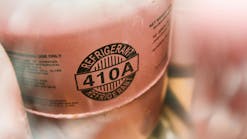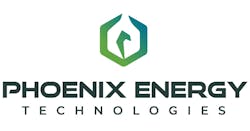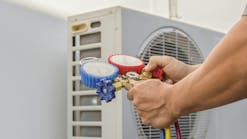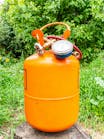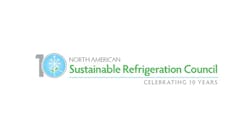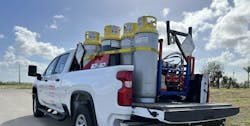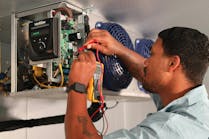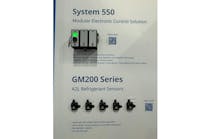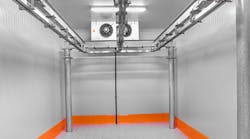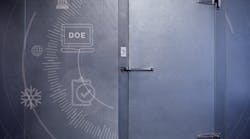It’s been three years since the Department of Energy (DOE) passed its final rule on new energy conservation standards for walk-in coolers and freezers (WICFs) used in commercial refrigeration. The ruling brings new efficiency requirements to WICFs with dedicated condensing systems in both low- and medium-temperature applications.
Although this rule took effect in July 2017, enforcement of the new requirements did not go into effect until this year. Per the DOE ruling, 20-40 percent energy reductions are now required on WICFs smaller than 3,000 square feet manufactured as of the following enforcement dates:
• January 1, 2020, for WICFs with medium-temperature dedicated condensing systems
• July 10, 2020, for WICFs with low-temperature dedicated condensing systems
Now that enforcement dates are here, industry stakeholders are tasked with verifying that they are achieving compliance with the DOE rule.
Refrigeration system and component impacts
The DOE’s WICF ruling directly applies to anyone manufacturing, producing, assembling or importing to certify WICF components. Impacted parties must meet the applicable standards based on the date of manufacture.
The DOE’s WICF ruling directly applies to anyone manufacturing, producing, assembling or importing to certify WICF components. Impacted parties must meet the applicable standards based on the date of manufacture.
From a refrigeration system standpoint, compliant components refer to dedicated and packaged condensing units (indoor and outdoor) used in both new and retrofit applications, including:
• Condensing units that are assembled to construct a new WICF
• Condensing units used to replace an existing, previously installed WICF component (retrofit)
• Condensing units used within packaged systems
Other components — such as unit coolers (evaporators), doors, panels and lighting — are also within the jurisdiction of the DOE’s WICF ruling.
It’s important to note that contractors and wholesalers can still use and stock condensing units that were manufactured before the DOE enforcement dates for retrofit purposes. All condensing units manufactured after the enforcement dates must be compliant if intended for use in applicable WICF applications, as defined by the DOE’s ruling.
AWEF standard used to achieve WICF compliance
To evaluate the energy efficiency of a complete WICF system, the DOE uses a metric created by the Air-Conditioning, Heating, and Refrigeration Institute (AHRI) called the Annual Walk-In Energy Factor (AWEF). As defined by AHRI, the AWEF calculation is based on “a ratio of the total heat, not including the heat generated by the operation of refrigeration systems, removed, in Btu, from a walk-in box during a one-year period of usage for refrigeration to the total energy input of refrigeration systems, in watt-hours, during the same period.”
Per the DOE, there are several WICF equipment classes below the 3,000 square foot limit that must meet or exceed the minimum AWEF ratings based on capacity and application (e.g., medium- or low-temperature, indoor or outdoor).
**** The table HERE details the minimum AWEF rating per equipment class.
Condensing unit manufacturers and WICF OEMs follow approved AWEF testing and certification procedures to meet or exceed the DOE standards.
How will the ruling impact you?
The DOE’s WICF ruling has broad impacts throughout the industry, from OEMs and wholesalers to contractors and end users. Because the DOE WICF ruling impacts both new and retrofit equipment, every segment of the commercial refrigeration supply chain will need to understand its implications. Here’s what you need to know:
• OEMs — need to complete the engineering design cycle, testing and certification to sell new compliant equipment.
• Contractors — must understand that if they replace a condensing unit with one manufactured after the DOE enforcement dates, it must be an AWEF-compliant unit. However, units manufactured prior to the DOE’s enforcement dates already in inventory may still be used.
• Wholesalers — must be prepared for changing inventories and begin to carry only AWEF-compliant condensing units for all units that are manufactured after the 2020 enforcement dates for the relevant WICF applications.
• Design consultants — must be well-versed in the regulatory impacts to advise end users in the selection of energy-compliant, sustainable systems.
• End users — need to select future-proof equipment that aligns with their long-term refrigeration strategies.
Future rulemakings
While the commercial refrigeration industry adapts to the DOE’s 2017 rulemaking, we expect an updated DOE standard yet in 2020, with 2023 as the potential enforcement date. Recently, the DOE issued a final Process Rule that revises the way in which new standards will be developed.
With new WICF testing and rating standards currently being finalized by ASHRAE and AHRI, the DOE has stated that it will finalize test procedures 180 days before proposing new rulemaking for an energy conservation standard. Be on the lookout for more guidance from the DOE in 2020, including opportunities to participate in public stakeholder meetings.
Don’t wait; consult an expert
If you’re an OEM of walk-in coolers and freezers, you now need to manufacture WICFs that meet the DOE’s minimum AWEF standards. If you’re not sure how to proceed with this compliance process, Emerson can help guide you through this transition in multiple ways.
Choose from our AWEF-rated condensing units and energy-efficient compressors or utilize our Design Services Network to expedite your product development, design and testing processes. With our breadth of products, expertise and resources, we can help you achieve compliance and develop sustainable refrigeration strategies for your customers — and our future.
BE SURE TO READ THE SIDEBAR BELOW
Sources:
https://www1.eere.energy.gov/buildings/appliance_standards/pdfs/manufacturer_faq_2012-01-30.pdf
https://www1.eere.energy.gov/buildings/appliance_standards/pdfs/wicf_faq_2012-01-20.pdf
https://www.regulations.doe.gov/certification-data/#q=Product_Group_s%3A*
https://www1.eere.energy.gov/guidance/detail_search.aspx?IDQuestion=613&pid=2&spid=1
https://www.regulations.gov/document?D=EERE-2015-BT-STD-0016-0075
Julie Havenar joined Emerson in 2015. As the company’s product manager for condensing units, she focuses her efforts on the development and marketing of condensing units to serve both the foodservice and food retail markets. Prior to her role in product management, she was held roles in strategic pricing & market analysis.

